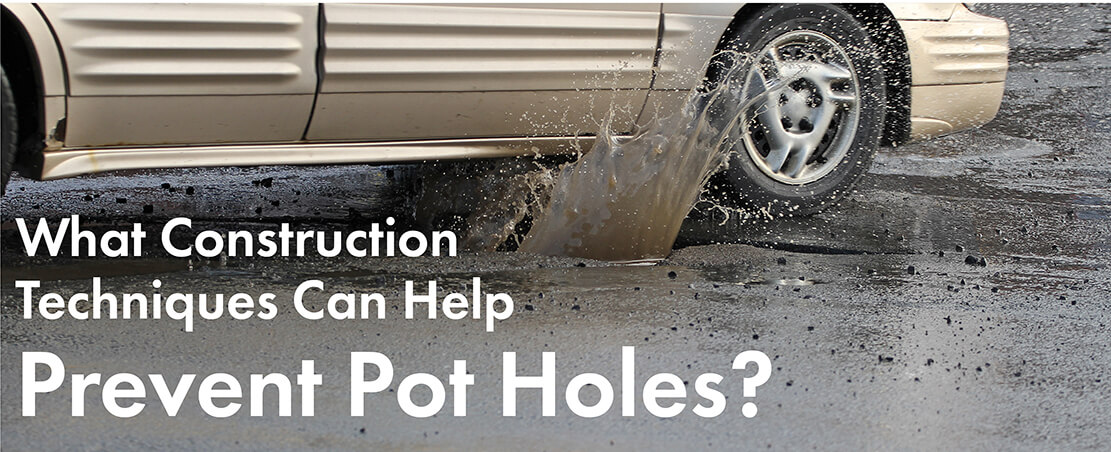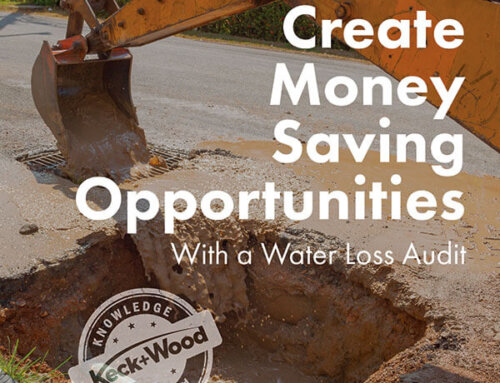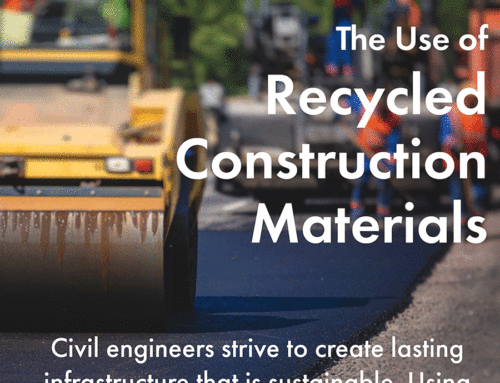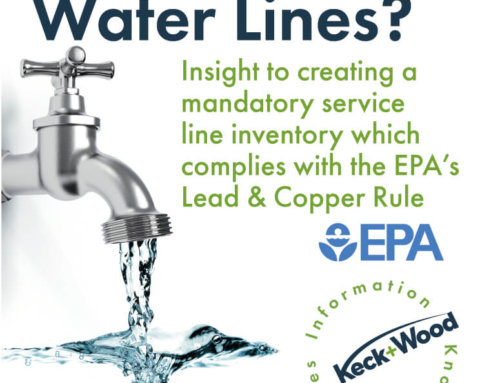
If you’re a civil engineer, potholes probably annoy you more than the average driver. The truth is most of these road defects develop as the result of shoddy road repairs or poor construction methods. At Keck & Wood, we work on local and state roads continuously, so we know firsthand what it takes to design highways that can withstand the test of time. Asphalt and concrete wear out over time, but with proper attention to detail, that shouldn’t happen for many years after construction or repairs.
In this article, we begin with a simple definition, discuss the causes of potholes, and wrap up with a look at pothole prevention. We hope you find this useful when choosing a firm to develop your next transportation planning or construction project.
What Is a Pothole, Anyway?
The word itself has an interesting history that originated with fifteenth- and sixteenth-century potters. According to the story, pottery-makers took advantage of holes in cobblestone streets. They would use the clay beneath the roads as an easy source of materials for their ceramics. Wagon and coach drivers, knowing the culprits, began referring to these ruts as “potholes.”
Potholes refer to dips, holes and downright craters on the road surface. They are especially prevalent on asphalt pavement. Let’s talk about what causes them and how they grow into major problems.
What Are the Common Causes of Potholes?
Without these two ingredients, a pothole won’t form: TRAFFIC and WATER.
Construction crews build roads in layers. The materials used for the top layer resist water and the surface curves to encourage drainage onto the shoulder of the road. However, all roads eventually develop surface cracks. These cracks form as a result of expansion and contraction due to weather and temperature changes. The pressure of traffic can expedite the deterioration around cracks and depressions.
Here are some of the most common causes of potholes:
- During the day, the sun warms the asphalt or other surface material, causing it to expand. At night, the road cools off and begins to contract. This daily cycle can also cause or exacerbate the formation of potholes.
- Small cracks allow water to seep into the underlying surfaces. On cold nights, this water freezes, expanding and widening the cracks.
- When the ice melts during the day, it can flow to another part of the road, forming new cracks.
- Traffic causes stress on the cracks, widening them and allowing more water to seep through to other layers.
- When a vehicle passes directly over weak spots, it does two things. First, it breaks down the size of the crack or expanding pothole. Second, it removes the damaged material. This leaves behind a pothole.
What Affects How Long Pavement Will Last?
The useful life of pavement (and the speed of pothole formation) is affected by the following factors:
- What type of vehicles frequents the roadway? Vehicles with numerous axles, high tire pressure and high gross vehicle weight do the most damage.
- What is the traffic volume and mix? The more traffic, the more potholes.
- What are the environmental conditions? Hotter, drier climates may produce fewer potholes.
- What is the surrounding topography like? Rockslides, flash floods and other factors influence the formation of potholes.
- What condition is the subgrade in? Age and original construction techniques play a huge part in how well roads can withstand traffic pressure and repel water.
- What were the initial pavement design and construction practices? Properly constructed roads, although not impervious to damage, decrease the odds of potholes and other defects.
- Is the roadway properly maintained? Properly patching or replacing damaged sections of roadway can prevent further pothole expansion and formation.
- How old is the pavement? Pavement can crumble and deteriorate quickly once it passes its useful life.
During the winter, salt can create ideal conditions for the formation of potholes. Normally, water freezes at 32 °F. However, salt lowers the freezing point of water. Water will thaw and freeze more frequently, potentially damaging the roadway with every cycle. This type of damage takes place more often in the early spring due to fluctuating temperatures.
What Construction Techniques Can Prevent Potholes?
As an engineer, there are a few things to keep in mind when designing roadways with pothole prevention in mind.
The following best practices can limit the formation and expansion of potholes:
- Survey the pavement often to identify risk factors for early intervention.
- Ensure proper drainage with well-designed road surfaces, shoulders and drainage structures (culverts, storm drains, etc.)
- Implement preventive maintenance that includes oversight of utility cuts.
How you repair cracks and potholes plays a huge role in whether the patch will hold or create more damage in the long run. When sealing asphalt cracks, it’s important to use the right materials to prevent water from seeping into the substrate. The technique we use most frequently is crack sealing (GDOT Standard Specification 407) which involves filling cracks and joints with rubber asphalt mixtures.
Fog seals use loose, slow-setting asphalt to fill cracks and potholes on older road surfaces. On the other hand, chip seals, which use multiple layers of asphalt intermixed with fine aggregate, work better on areas with many cracks and potholes. It can smooth out the surface of the roadway, facilitating traffic flow.
Microsurfacing is another method to repair potholes and prevent new ones from forming. It involves mixing asphalt emulsion with crushed stone that compresses and works its way into cracks and potholes as traffic flows over it.
Timing is everything. Pothole prevention should start at the first sign of visible cracks. However, this requires monitoring by thinly stretched DOTs. By sealing the pavement at the first sign of trouble, you can prevent water from entering the substrate, creating an ideal environment for multiple potholes to form.
It’s important to encourage communities to spend money on monitoring and early maintenance. Although there is typically a backlog of maintenance projects at the local and state levels, municipalities could save a lot of money catching and fixing cracks before they turn into potholes.
“Crack repair and pothole prevention are key tools in a municipality’s pavement management arsenal which can extend the useful life of roads and allow for efficient resource allocation. Keck & Wood frequently assists clients to incorporate our pavement condition assessment technologies into their pavement management programs to prepare better capital investment planning strategies,” said Adam Shelton – Keck + Wood Asset Management Engineer.
Properly-sealed potholes rarely lead to parallel potholes and additional cracks and damage. As another preventive measure, we recommend sealing the joint between the concrete gutter and the pavement. This can keep water from pulling along the shoulder and seeping under the edge of the roadway.
Contact Keck & Wood today for more insight into proper construction and maintenance practices. Our team of industry experts consult with government and private organizations needing assistance with everything from transportation planning to parks and recreation to construction projects. And we know a lot about potholes too!






Leave A Comment